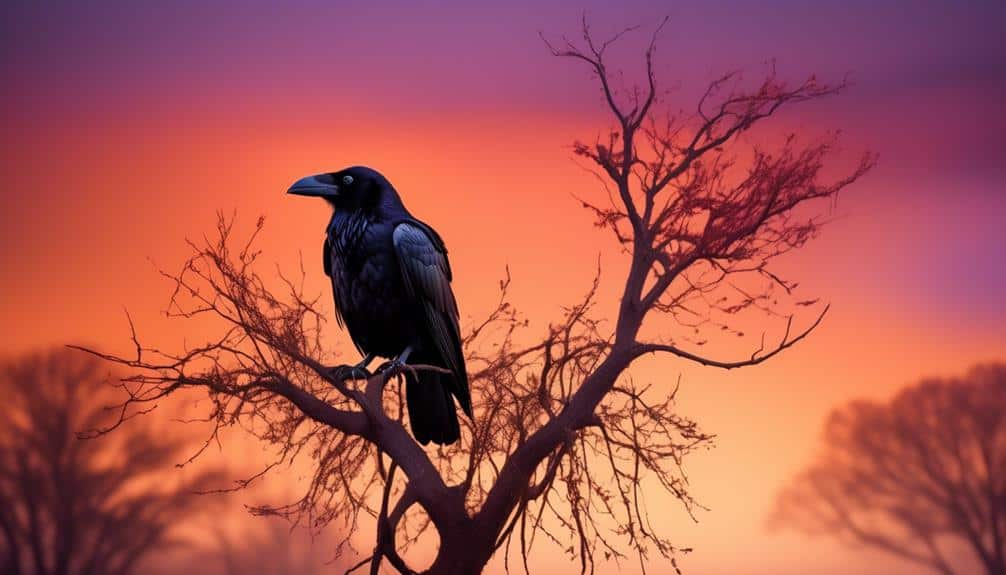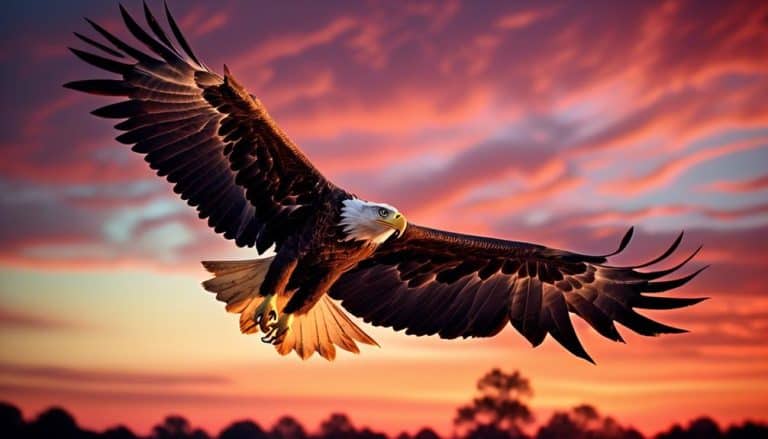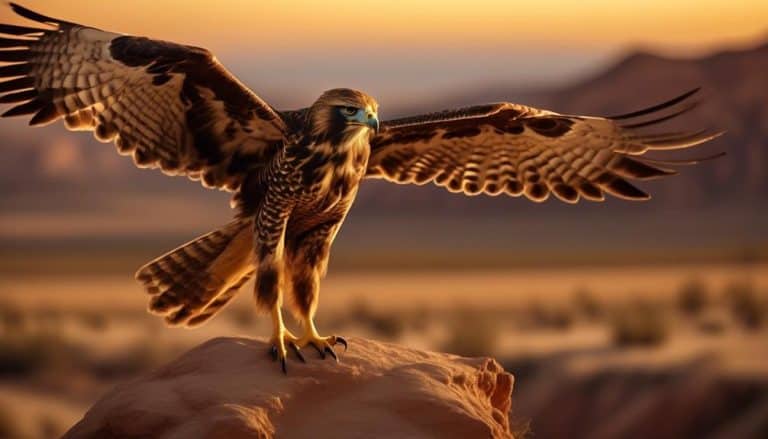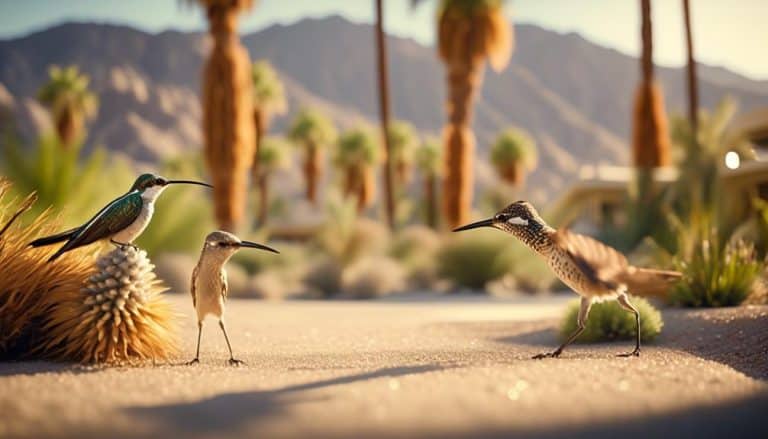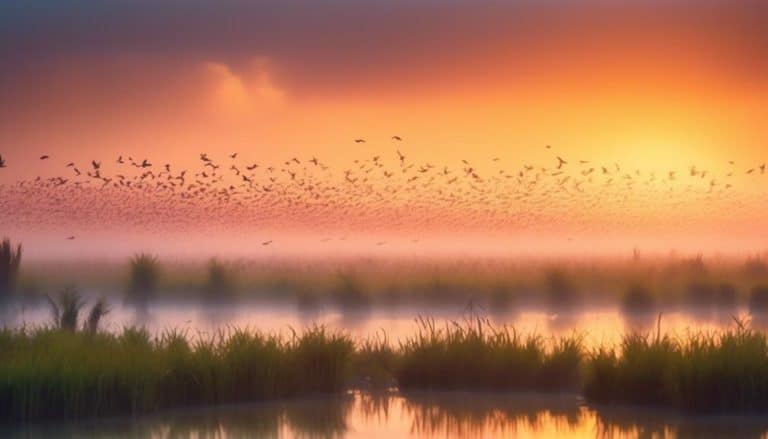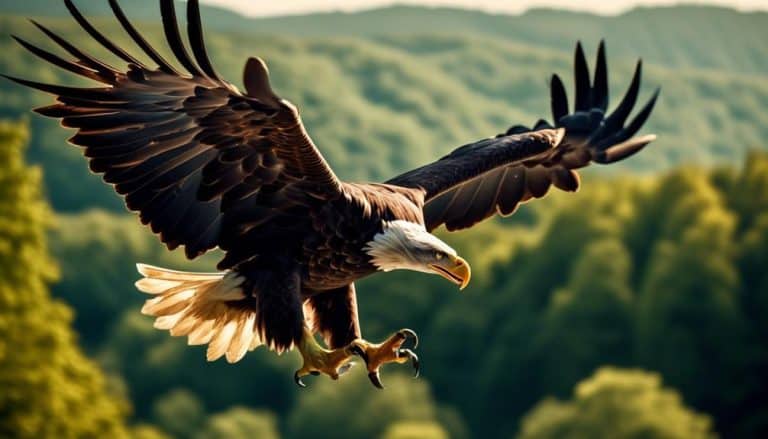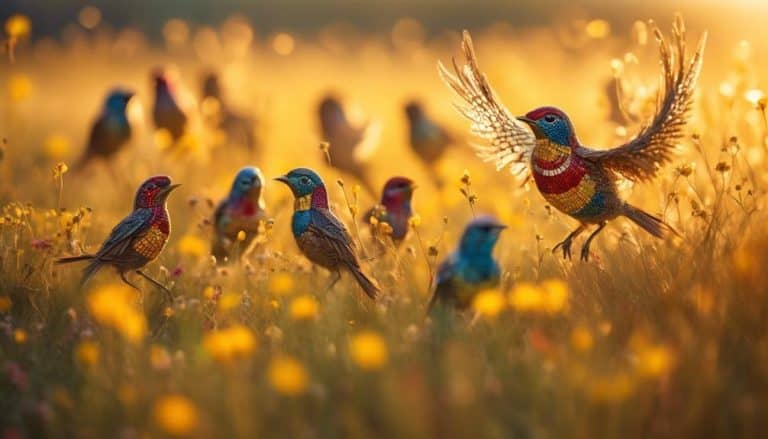As a nature enthusiast residing in Virginia, I am always captivated by the charm and charisma of the black birds that grace our skies. These feathered creatures, with their sleek plumage and melodic calls, bring a sense of mystery and intrigue to our surroundings.
But what exactly do we know about these black birds that call Virginia home? Join me on a journey as we explore the characteristics, behaviors, habitat, and importance of these enigmatic avian residents.
Common Black Bird Species in Virginia
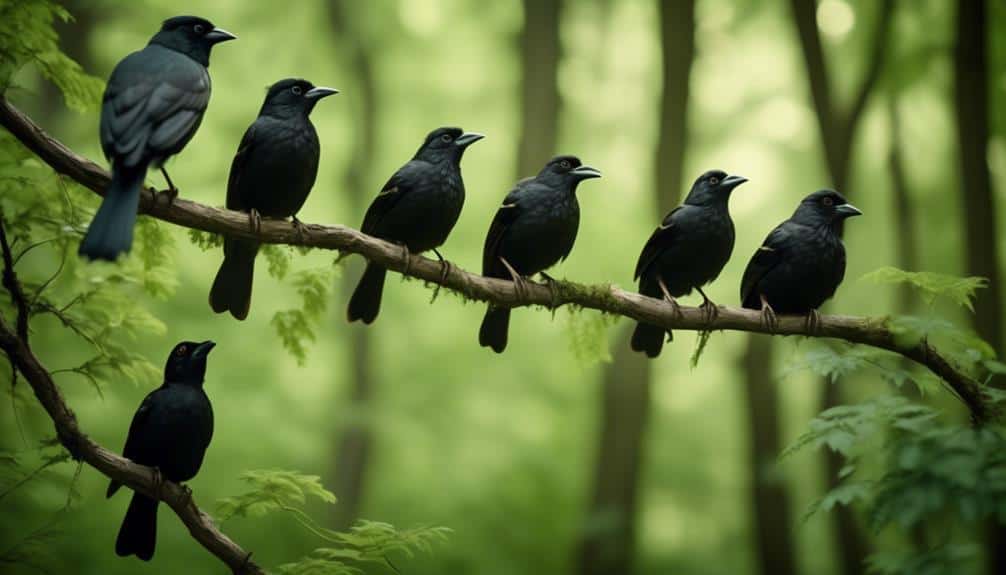
Common black bird species can be found throughout Virginia, adding a touch of elegance and mystery to the state's diverse avian population. One such species is the American Crow (Corvus brachyrhynchos), a large black bird known for its distinctive cawing call and intelligent behavior. The American Crow is a common sight in urban and rural areas, often seen foraging for food or perched on tree branches, surveying its surroundings. Birdwatching opportunities in Virginia abound, and observing these charismatic birds in their natural habitat is a treat for enthusiasts.
Another black bird species found in Virginia is the Red-winged Blackbird (Agelaius phoeniceus). Males of this species have striking red and yellow shoulder patches, which they display during courtship and territorial defense. They can be found in wetlands, marshes, and along the edges of ponds and streams.
Conservation efforts for black bird populations in Virginia are crucial to their survival. Loss of habitat due to urbanization and agriculture, as well as the use of pesticides, pose significant threats to these birds. Organizations like the Virginia Society of Ornithology are actively working to protect and preserve their habitats.
Characteristics and Behaviors of Black Birds
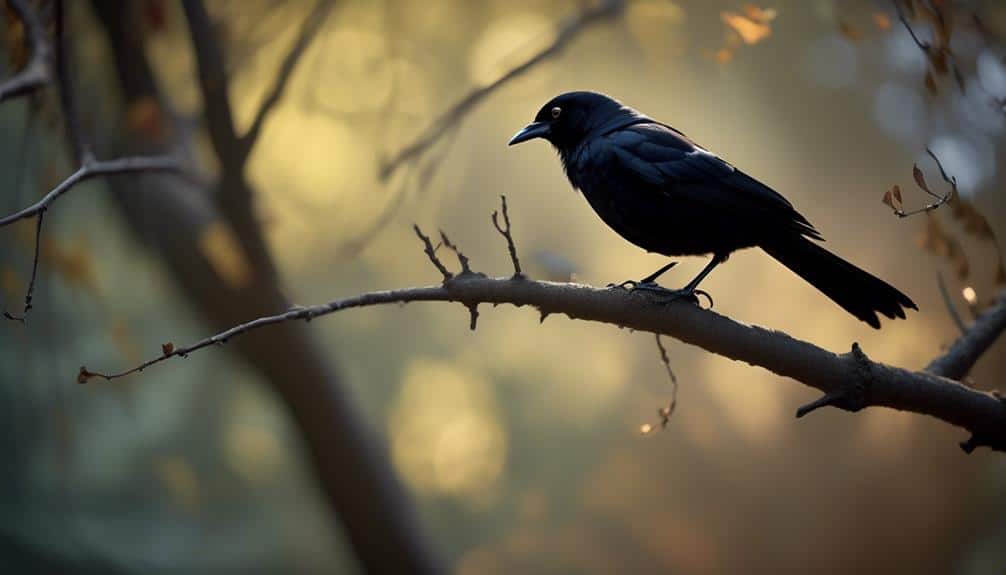
The black bird species found in Virginia exhibit distinct characteristics and behaviors that contribute to their captivating presence in the state's avian community. These birds display fascinating migration patterns, intricate vocalizations, and complex communication systems.
- Migration Patterns:
- Black birds in Virginia are known for their remarkable migratory journeys. They undertake long-distance flights, traveling to their breeding grounds in the north during the spring and returning to their wintering areas in the south during the fall.
- These birds form large flocks, often consisting of thousands of individuals, during migration. They fly in V-shaped formations, taking advantage of the aerodynamic benefits of drafting.
- The timing and routes of their migrations are influenced by various factors, including food availability, weather conditions, and celestial cues.
- Vocalizations and Communication:
- Black birds possess a wide repertoire of vocalizations, ranging from melodious songs to sharp calls. Males often use their songs to attract mates and establish territories.
- Their vocalizations also serve as a means of communication within the flock, conveying information about food sources, potential threats, and social hierarchies.
- Black birds are highly skilled mimics, capable of imitating the calls of other bird species and even human sounds. This ability enhances their communication and allows them to adapt to changing environments.
Black Birds' Habitat and Distribution in Virginia
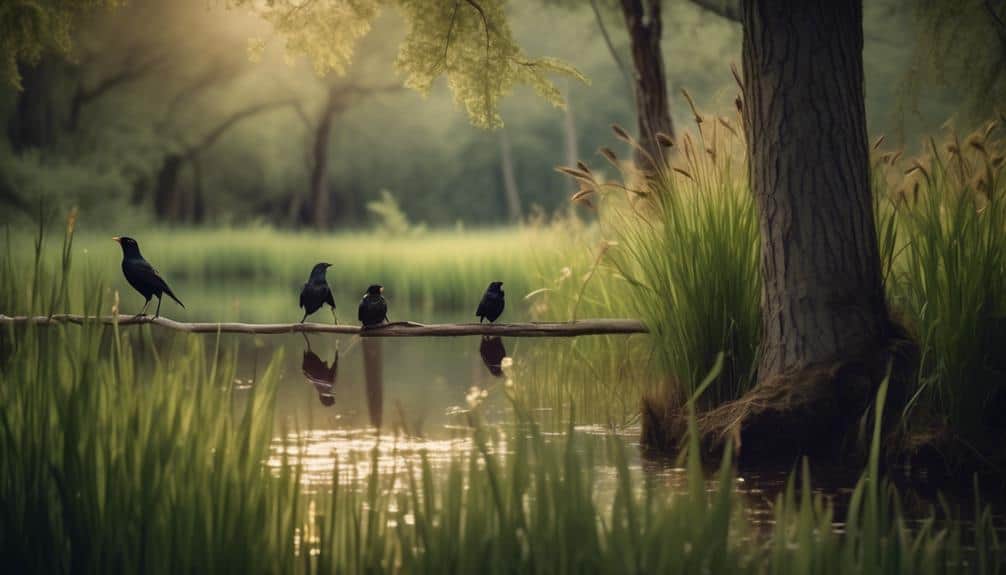
Black birds in Virginia can be found in a variety of habitats throughout the state. They've adapted to diverse environments, including forests, wetlands, and urban areas. These adaptable birds are known for their distinctive black plumage, which helps them blend into their surroundings and avoid predators.
Black birds in Virginia aren't limited to a specific region or habitat type. They can be found in both rural and urban areas, making use of available resources such as food and nesting sites. Their widespread distribution is a testament to their ability to thrive in a range of conditions.
Migration is an important aspect of black bird behavior. Many black bird species in Virginia are migratory, traveling long distances to find suitable breeding grounds and food sources. They typically migrate in large flocks, creating an impressive sight as they move across the landscape.
Conservation efforts for black birds in Virginia focus on protecting their habitats and addressing threats such as habitat loss, pollution, and climate change. Preservation of wetlands and forested areas is crucial for their survival, as these habitats provide essential resources for nesting, foraging, and resting.
Black Birds' Diet and Feeding Habits
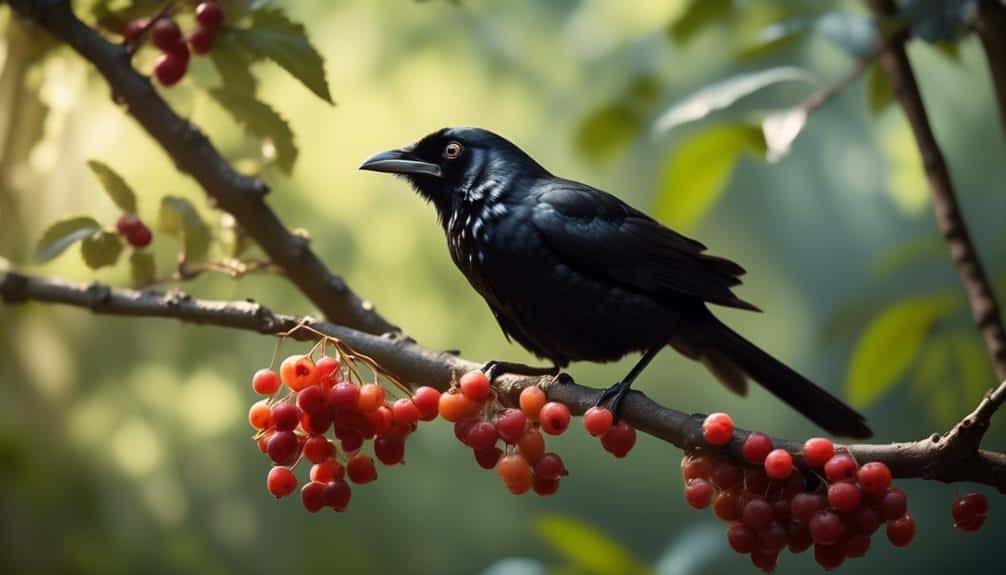
With their varied diet and feeding habits, black birds in Virginia play a crucial role in the ecosystem. They've adapted to be opportunistic feeders, allowing them to thrive in a variety of habitats. Here are some key aspects of their foraging behavior:
- Omnivorous diet: Black birds have a diverse diet that includes both plant and animal matter. They consume a wide range of fruits, seeds, insects, worms, and small vertebrates. This versatility in their diet enables them to find food throughout the year.
- Group foraging: Black birds often forage in large flocks, which increases their chances of finding food and offers protection against predators. They employ a 'safety in numbers' strategy, where individuals take turns watching for danger while others feed.
- Impact on agricultural crops: While black birds provide valuable ecosystem services, their foraging behavior can also have negative consequences for agricultural crops. They may feed on newly sown seeds, damage ripening fruits, or consume grains from fields. This can result in economic losses for farmers and require management strategies to mitigate the damage.
Understanding the black birds' diet and feeding habits is crucial for balancing their ecological importance with the need to protect crops. By implementing targeted management practices, we can ensure the coexistence of these birds and agricultural activities in Virginia.
Mating and Breeding Patterns of Black Birds
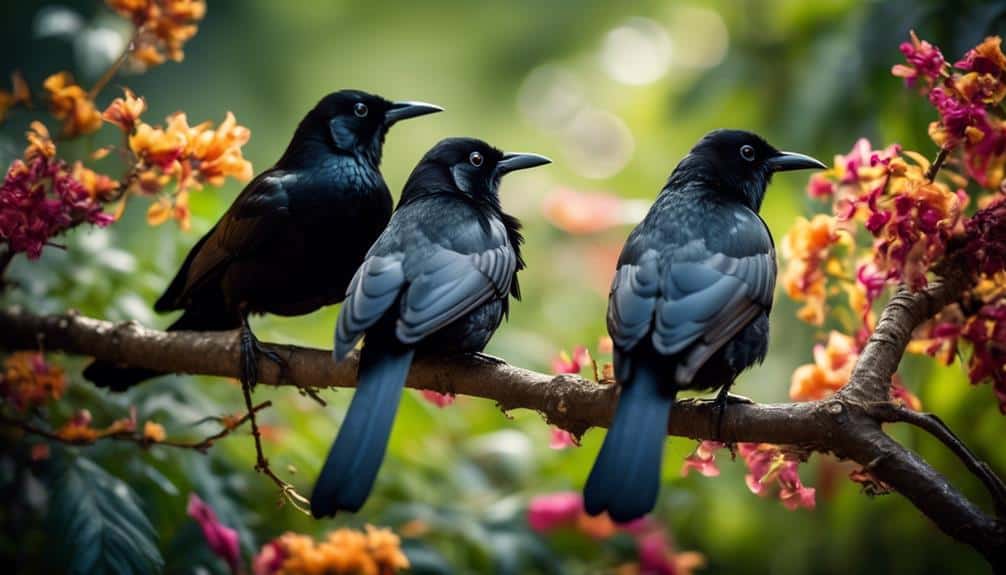
Mating and breeding patterns of black birds in Virginia are characterized by intricate courtship displays and highly territorial behaviors. Black bird courtship rituals are a fascinating spectacle to observe. The male black birds, with their glossy black feathers and melodious songs, engage in elaborate displays to attract females. They puff up their chests, spread their wings, and hop from branch to branch, all the while singing their enchanting songs. These displays not only showcase the male's physical prowess but also serve as a means of communication to establish their dominance and attract a mate.
Once a pair has formed, the black birds start building their nests. They prefer to nest in dense vegetation, such as shrubs or thickets, providing protection from predators. The female takes the lead in constructing the nest, using twigs, grass, and other plant materials. The nest is carefully woven, creating a sturdy and cozy structure for their eggs.
After the nest is complete, the female lays a clutch of eggs, usually numbering between three to five. Both the male and female take turns incubating the eggs, ensuring their warmth and safety. This shared responsibility strengthens the bond between the pair and allows for efficient nest protection.
Once the eggs hatch, the parents tirelessly feed and care for their young, bringing them insects, seeds, and berries. The chicks grow rapidly under their parents' watchful eyes, preparing them for their eventual fledging from the nest.
The Importance of Black Birds in Virginia's Ecosystem
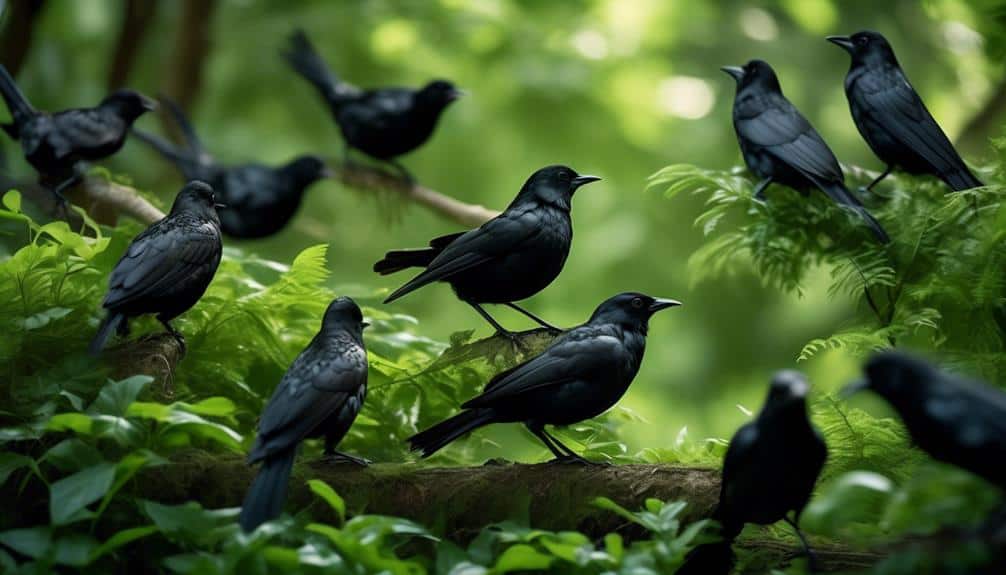
Observing the intricate courtship displays and territorial behaviors of black birds in Virginia provides valuable insight into their role and significance within the state's ecosystem. These birds, such as the Common Grackle and Red-winged Blackbird, play a crucial role in controlling insect populations, making them important for maintaining a balanced ecosystem in Virginia.
The role of black birds in controlling insect populations:
- Black birds are known for their foraging behaviors, actively searching for insects in various habitats.
- They have a diverse diet, feeding on a wide range of insects including grasshoppers, beetles, and caterpillars.
- By consuming large quantities of insects, black birds help regulate insect populations and prevent them from reaching harmful levels.
The impact of habitat loss on black bird populations:
- Habitat loss due to urbanization and agricultural expansion has negatively affected black bird populations in Virginia.
- Destruction of wetlands and forests, which are important nesting and foraging sites for black birds, has resulted in population declines.
- Loss of suitable habitats reduces the availability of food and nesting sites, making it harder for black birds to survive and reproduce.
Understanding the importance of black birds in Virginia's ecosystem is crucial for conservation efforts. Protecting their habitats and ensuring the availability of suitable food sources will help maintain healthy populations and the ecological balance they contribute to.
Frequently Asked Questions
How Many Species of Black Birds Are There in Virginia?
There are several species of black birds in Virginia. They have different habitat preferences and exhibit various vocalizations and communication behaviors. It is fascinating to study their unique characteristics and observe them in their natural environment.
What Is the Average Lifespan of Black Birds in Virginia?
The average lifespan of black birds in Virginia varies depending on factors such as species, habitat, and predation. Their reproductive patterns also play a role in determining how long they live.
Do Black Birds in Virginia Migrate During the Winter?
During the winter, black birds in Virginia have different habits. Some migrate to warmer areas while others adapt to the cold. They find food by foraging on the ground, in trees, and even at bird feeders.
Are Black Birds in Virginia Considered a Threatened or Endangered Species?
Black birds in Virginia are not considered a threatened or endangered species. However, it is important to monitor their population trends and implement conservation efforts to ensure their continued presence in the region.
Do Black Birds in Virginia Have Any Natural Predators?
Black birds in Virginia have natural predators that play a vital role in predator-prey dynamics and impact local ecosystems. Understanding the interactions between black birds and their predators is crucial for maintaining the balance of the ecosystem.
Conclusion
In conclusion, while some may argue that black birds in Virginia are simply a common sight and hold little significance, it's important to recognize their crucial role in the state's ecosystem.
These birds contribute to seed dispersal, insect control, and pollination, helping to maintain a balanced and healthy environment.
By understanding and appreciating the characteristics, behaviors, and habitat of black birds, we can ensure their continued presence and the overall well-being of Virginia's natural world.

